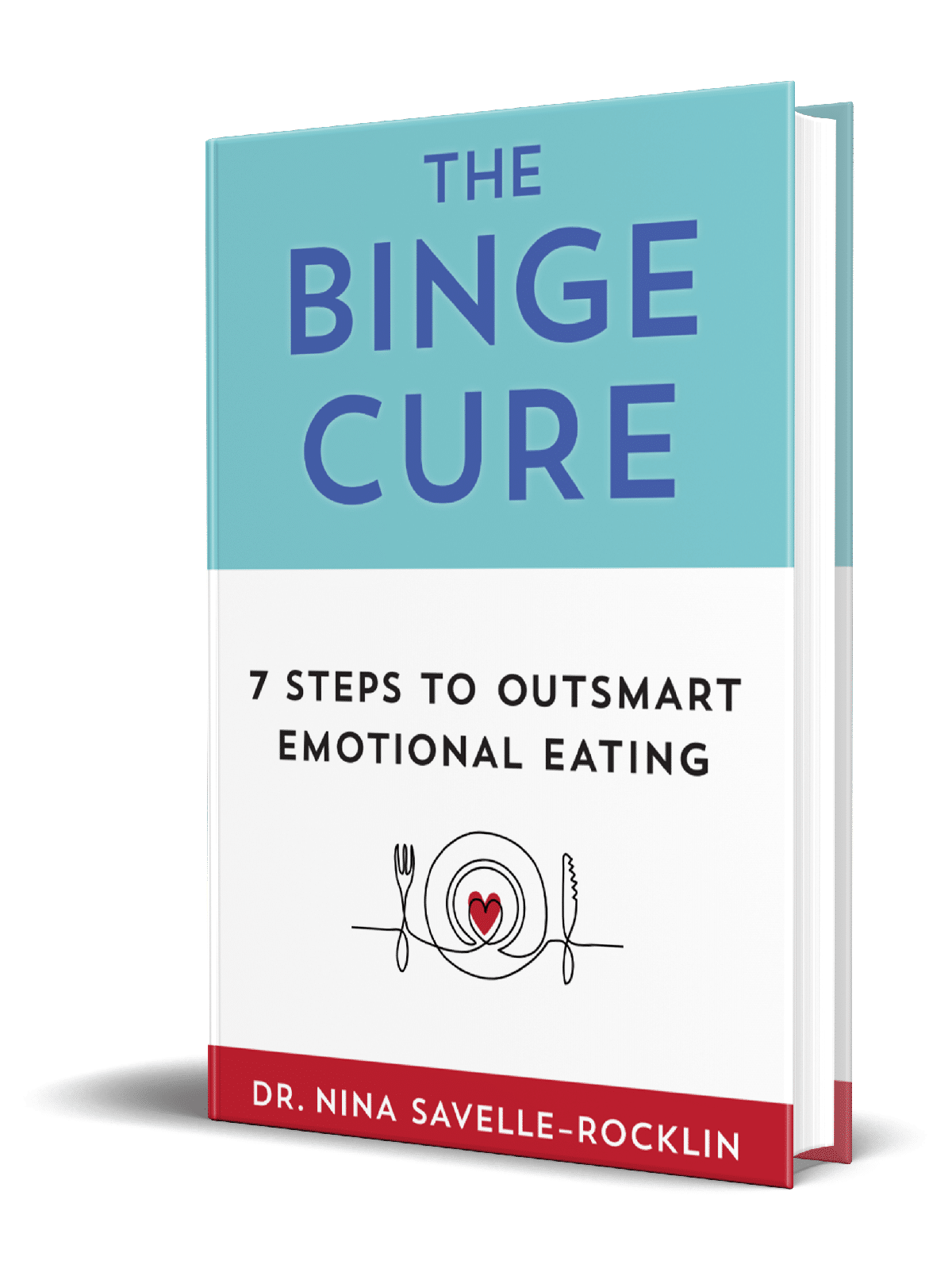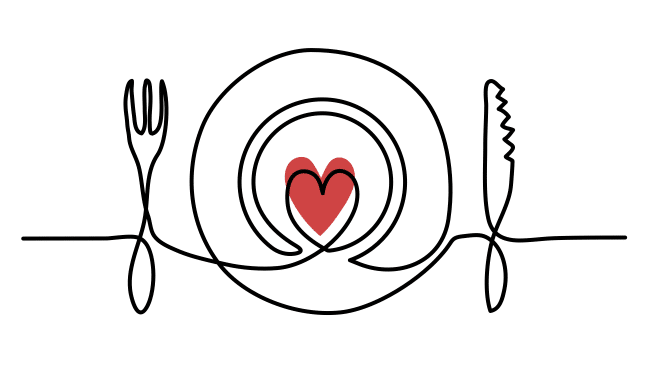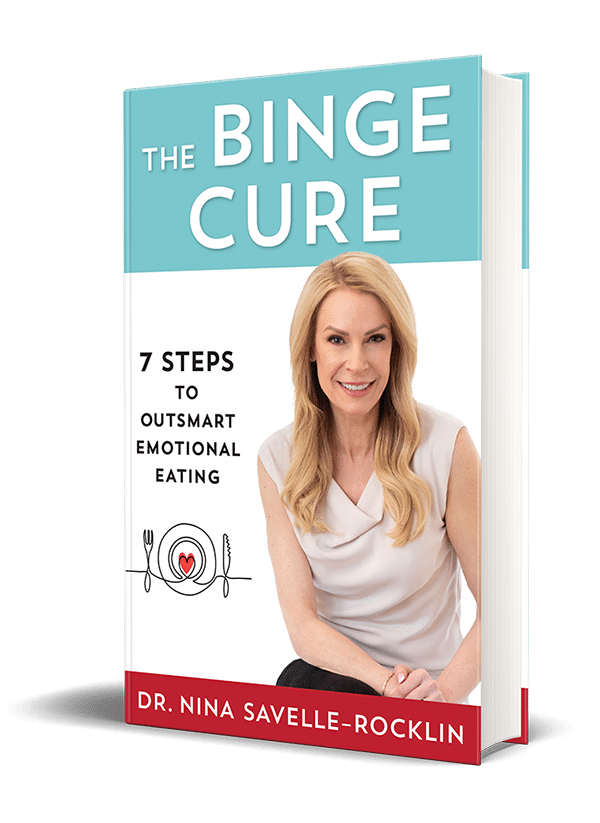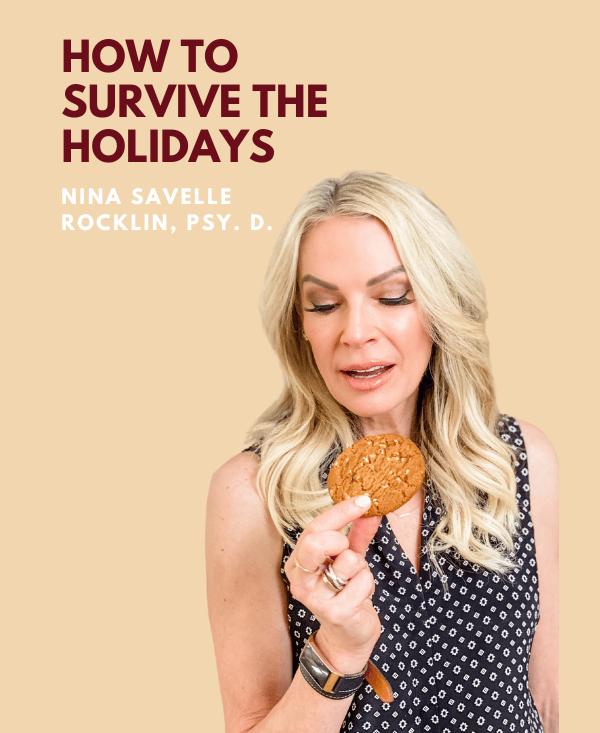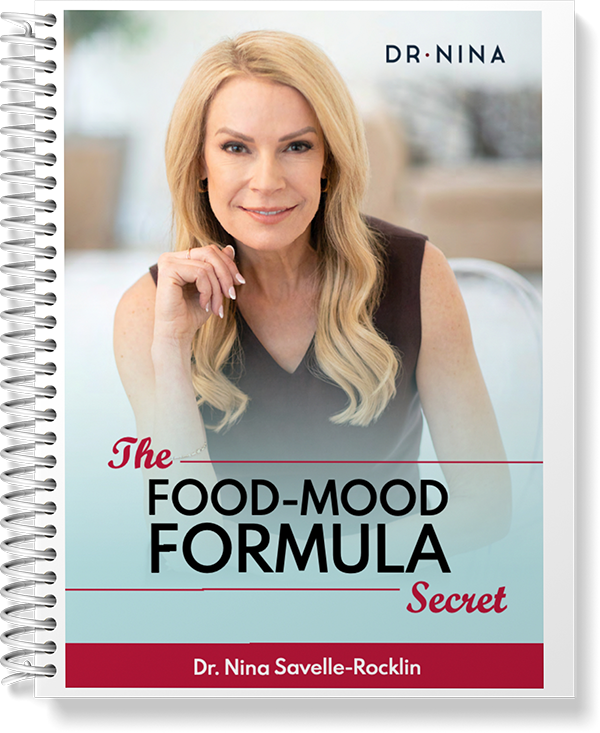Dr. Nina Savelle-Rocklin
How to Easily Spot Binge Eating Disorder Symptoms
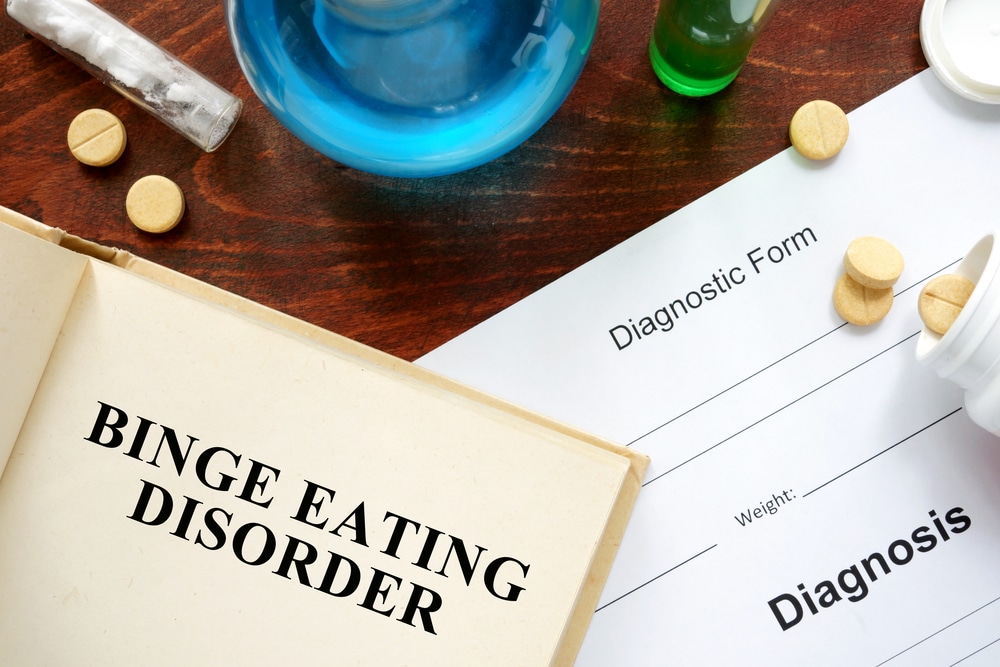
Table of Contents
- Understanding Binge Eating Disorder Symptoms
- How Is Binge Eating Disorder Different from Overeating?
- Why Binge Eating Disorder Is Often Overlooked
- Binge Eating Disorder Symptoms vs. “Food Addiction”
- Common Misconceptions About Binge Eating Disorder
- Decoding the Symbolism of Binge Eating
- A Client Story: Maddie
- Addressing Binge Eating Disorder Symptoms
- Conclusion
- Frequently Asked Questions
Binge Eating Disorder symptoms can be difficult to recognize, especially since many people assume bingeing signifies a lack of willpower and control. In reality, Binge Eating Disorder (BED)is the most common eating disorder, more prevalent than anorexia and bulimia combined, and it is a serious condition that deserves understanding and care.
This article explores the key signs of Binge Eating Disorder, explains how it differs from overeating, and highlights why it is often misunderstood. You’ll also learn about the psychological roots of binge eating, and how awareness can be the first step toward lasting change.
Understanding Binge Eating Disorder Symptoms
The hallmark of Binge Eating Disorder is repeated episodes of consuming unusually large amounts of food in a short period of time, often accompanied by a painful sense of being out of control. People with BED frequently eat until they feel uncomfortably full, even to the point of physical pain. Unlike an occasional indulgence, these episodes happen regularly and leave behind overwhelming guilt, shame, and distress.
Some of the most common Binge Eating Disorder symptoms include:
- Eating large amounts of food rapidly and secretly.
- Eating even when not physically hungry.
- Continuing to eat long after feeling full.
- Experiencing distress, guilt, or shame afterward.
- Feeling unable to stop, no matter how strong the intention to control it.
These symptoms create a vicious cycle. Bingeing temporarily numbs or soothes painful emotions, but the guilt that follows often triggers more bingeing. Recognizing this cycle is an important step to create change.
How Is Binge Eating Disorder Different from Overeating?
Everyone overeats from time to time. Think of Thanksgiving, birthday parties, or simply enjoying food that tastes especially good. Overeating in those situations may cause discomfort but rarely carries the same emotional consequences.
With Binge Eating Disorder, the eating is not tied to celebration or hunger. Instead, one of the core binge eating disorder symptoms is eating in the absence of hunger and continuing far beyond fullness. More importantly, BED episodes are usually followed by intense shame and distress. Overeating may make someone feel sluggish or regretful, but BED often leaves a person feeling worthless, broken, or out of control.
Another key difference is that binge eating functions as a coping mechanism. Eating becomes a way of managing stress, loneliness, anger, or other painful emotions. This is not the case with typical overeating, which is about food. Understanding this distinction can help people stop blaming themselves and begin to see their symptoms as signals of deeper emotional needs.
Why Binge Eating Disorder Is Often Overlooked
Many people fail to recognize binge eating disorder symptoms because they assume the problem is willpower. They may believe they are weak, undisciplined, or even “addicted to food.” These beliefs create more shame and keep people trapped in the BED cycle.
Yet BED is not about control or addiction. It is not a personal failure. Bingeing is an attempt to self-soothe, to distract from emotional pain, or even to symbolically “fill up” when life feels empty. Think of binge eating as a kind of frenemy: it feels like a friend because it brings temporary comfort, but it quickly turns into an enemy because the relief never lasts and the shame deepens.
Binge Eating Disorder Symptoms vs. “Food Addiction”
Many clients who struggle with BED insist they must be addicted to sugar, carbs, or processed food. While the idea of “food addiction” is popular in culture, it is not formally recognized as a psychiatric diagnosis.
Yes, highly palatable foods light up the brain’s reward system. But so do laughter, music, and intimacy. Unlike drugs, food is necessary for survival, and the brain’s response is part of a normal survival mechanism. True addiction involves tolerance, dependency, and severe withdrawal symptoms, features that do not align with binge eating.
What looks like “food addiction” is often an emotional attachment to food. The binge eating disorder symptoms reveal that food is serving as comfort, distraction, or symbolic communication of emotional pain. The solution is not abstinence from food but developing healthier ways to meet needs.
Common Misconceptions About Binge Eating Disorder
Because binge eating disorder symptoms are often misunderstood, there are many damaging myths about BED:
- Myth 1: Only overweight people binge eat.
In fact, BED affects people of all sizes. Weight is not a reliable indicator. - Myth 2: It’s less serious than anorexia or bulimia.
BED can cause significant medical problems such as heart disease, diabetes, gastrointestinal distress, and sleep apnea. The emotional toll is equally severe. - Myth 3: It only affects women.
Men also experience BED, though cultural stigma often prevents them from seeking help. - Myth 4: Dieting or exercise cures it.
Since binge eating is not about food itself, simply changing eating habits does not resolve the deeper issues. In fact, dieting often makes symptoms worse by reinforcing deprivation.
Decoding the Symbolism of Binge Eating
When we examine binge eating disorder symptoms closely, we often discover symbolic meanings beneath the behaviors.
- Eating until it hurts. This can reflect an unconscious attempt to turn emotional pain into physical pain, which is often easier to manage.
- Eating when lonely. Food may become a symbolic way of filling an inner void or emptiness.
- Feeling angry about bingeing. Sometimes, anger at oneself is a displacement of anger that feels too risky to express in relationships.
Understanding these symbolic messages is powerful. The body expresses what the mind cannot yet articulate. When those emotions are acknowledged and validated, the drive to binge begins to lose its intensity.
A Client Story: Maddie
Maddie came to therapy overwhelmed by her struggle with binge eating. She described going to family gatherings and eating just a small salad or something acceptable. Later, she’d binge alone at at home until she was in physical pain. Afterward, she berated herself for being weak.
In therapy, Maddie came to realize these binge eating disorder symptoms weren’t about food. They were about unprocessed emotions from childhood, when her needs were dismissed. Family gatherings triggered those old feelings of invisibility, and bingeing became her way of coping.
Once Maddie learned to validate her emotions and speak up for herself, the urge to binge diminished. She discovered that food had been a stand-in for comfort, but it was never the true solution. By addressing her emotional needs directly, she began to heal her relationship with food—and with herself.
Addressing Binge Eating Disorder Symptoms
Recognizing the symptoms is only the beginning. Healing requires support and self-compassion. Here are important steps:
- Seek professional help. A therapist specializing in binge eating disorder can help uncover the emotional triggers behind the behavior.
- Find community. Support groups provide understanding and encouragement, reducing the isolation that fuels bingeing.
- Practice self-care. Sleep, movement, and nurturing activities help reduce vulnerability to binges.
- Quiet the inner critic. Replacing harsh self-judgment with compassionate self-talk interrupts the shame cycle and supports recovery.
Each of these steps is about more than stopping binge eating. They are about developing a new relationship with yourself–one that is kinder, stronger, and no longer dependent on food for comfort.
Conclusion
Binge Eating Disorder symptoms go far beyond simply eating too much. They reflect an attempt to cope with painful emotions through food, which offers momentary relief but deepens shame and distress. By understanding these symptoms, challenging the myths, and addressing the underlying emotional needs, healing becomes possible.
Liberation from binge eating does not come from more willpower or stricter dieting. It comes from compassion, support, and learning to meet your needs in healthier ways. Every step toward self-understanding is a step toward freedom from binge eating.
Frequently Asked Questions
Can Binge Eating Disorder cause weight fluctuations?
Yes. Periods of binge eating followed by dieting attempts can create significant changes in weight. However, weight is not a defining feature of BED and many people who struggle with binge eating disorder symptoms are at a normal weight.
What health issues are linked to BED?
BED can contribute to diabetes, heart disease, gastrointestinal distress, sleep apnea, and more. Emotional consequences include depression, guilt, and anxiety.
Are feelings of shame common in Binge Eating Disorder?
Yes. Distress, guilt, and shame are central binge eating disorder symptoms. These feelings fuel more bingeing as a way to comfort, numb, or self-soothe, making it harder to break the cycle without professional support.
Do people with BED fast to compensate?
Many do. Periods of restriction or “making up for” binges often follow binge eating episodes, but these strategies do not help and often perpetuate the behavior.
Can Binge Eating Disorder be treated successfully?
Absolutely. With the right support, people can learn healthier coping strategies, reduce binge episodes, and create a balanced relationship with food. Recovery is absolutely possible.
Sick of obsessing about every bite?
GET THE CURE
The Binge Cure Book!
Enter “CURE” to receive a 20% discount.
No, I don’t want access to this terrific resource to help me overcome binge eating.
The Author

Dr. Nina Savelle-Rocklin is a renowned author and podcast host and one of the nation’s leading psychoanalysts known for the psychology of eating. Her signature message of, “It’s not what you’re eating, it’s what’s eating ‘at’ you” has resonated with hundreds of thousands of listeners from around the globe in 40 countries. As founder of The Binge Cure Method, she guides emotional eaters to create lasting food freedom so they can take back control of their lives and feel good in their bodies.
Related Blogs

